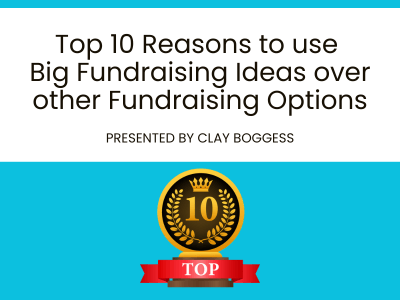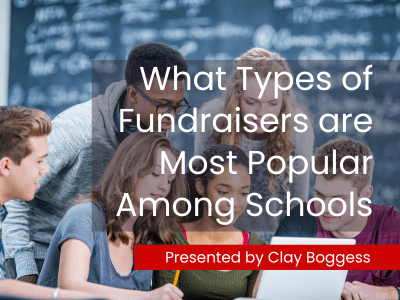
Choose the best prize plan for your school.
Most companies provide a similar type of incentive plan. There is no charge for the prizes, and they're even conveniently prepacked inside each student's box. For the most part, they work pretty well. They're designed to get students motivated about selling. But most students don't end up winning the big and exciting prizes.
Groups have used School fundraising prize programs for years. For the most part, they get the job done. Without this "carrot", participation would be much lower, and so would sales.
If you're interested in learning more about them, there are two things to consider. One is the parameters used to reward sellers. Students win prizes based on the dollar amount of items sold.
The second is how students win prizes. Students can either win a single prize or accumulate them. In some cases, more may be better. Students get excited about accruing prizes. This encourages some to continue selling. That's a good thing. But there's a catch. The quality of each prize tends to be lower.
There's also something to be said about choosing one higher-quality prize. First, with cumulative plans, students don't have a choice. Once students reach the next level, the prize is already determined. This may motivate some but not others. Or, the next prize two levels away may have their attention.
The second type called 'pick a prize', offers more choices. But it limits students to only one option. Yet the prizes available at each level tend to be better quality.
Which prize reward method is more popular with schools? There is no market data available to determine this. Our own experience has seen more sponsors choose the cumulative approach.
Profitable Easy to Run Catalog Sales Tips
Rewarding Students Based on Dollar Amount Sold
So which method is better? Some feel dollar amount sold should determine how students win prizes. This approach favors those who can sell more expensive items. Fewer pricier items being sold can be as beneficial as selling a lot of cheaper ones.
This is where brochure selection comes into play. Consider more expensive products if you're using dollar amounts as your basis. A cookie dough fundraiser sells well even though the items tend to fall in the higher $18-20 range.
A prize brochure that uses this format may work something like this:
- Sell $100 worth of product and win prize level A.
- Sell $250 worth of products and win prize level A + B.
- Sell $400 worth of product and win prize level A + B + C.
School Fundraising Prize Programs that Use Item Count
There's a psychological advantage to this approach. If students know they can get to the next prize level based on item count, they'll try to sell more. The more they sell, the better. The disadvantage is people tend to buy the lower-priced items in the catalog.
Here's an example of a typical cumulative prize flyer based on items sold:
- Sell 1 item and win a participation prize.
- Sell 5 items and win prizes from the first two levels.
- Sell 10 items and win prizes from the first three levels.
Cumulative vs. Noncumulative Prize Programs
Should you select a cumulative or noncumulative incentive plan? Cumulative is the obvious choice if you feel more prizes will motivate your students.
But if quality is a concern, go with a 'pick a prize' format. This is preferred if you've experienced complaints from parents about prizes not working. You also won't want to deal with the complaints as a sponsor. Here are some pros and cons of each type:
Pros of Cumulative Prize Programs:
- Students win more prizes as they reach higher prize levels.
- This tends to foster sales momentum.
Cons to Cumulative Prize Programs:
- To offer more prizes, the quality of each prize is lower.
- Students don't get to choose the prizes.
- The chance of having to deal with missing prizes increases. This is because of the sheer number of prizes involved.
Prosofo Noncumulative Prize Programs:
- Even though students only win one prize, the quality is usually better.
- Students get to choose which prize they want.
Cons to Noncumulative Prize Programs:
- Some students may not be as motivated to sell, knowing they only get one prize.
- Students must pick their prize and manually write it on the order form. Otherwise, the company chooses a default prize for them.
- Some sponsors may feel compelled to follow up with the student if prizes are not selected on the order form. This creates more work for the sponsor.
A Newer Hybrid Prize Reward Method
Some school fundraising companies combine cumulative and noncumulative methods into one prize program. For example, the first 4 or 5 prize levels are cumulative. After that, students pick one prize from the next higher-qualified level.
Let's say a student sells 80 items, and they qualify for the H level. The A through E levels are cumulative. Then, they'd choose one more prize at level H. They would not also receive level F and G prizes. All levels above E are noncumulative. Many students like this because it combines both types into one prize program.
When choosing a prize plan, it's essential to consider how achievable the levels are. Many plans offer a prize for selling as little as a single item to improve participation. All students should feel motivated to sell. The lower levels should appear obtainable to most students. This will help you establish the needed momentum.
Another thing to watch for is the number of items required between levels. Some students may not want to push to the next level if they have to sell another 20 items. But if they feel the prize is worth it, they may still try for it.
Choosing the right prize program for your school is only the first step. It's also essential to promote your fundraiser regularly. This is where you can leverage your incentive plan.
Check out three free school fundraising incentives that get results.
Author Bio
Clay Boggess has been designing fundraising programs for schools and various nonprofit organizations throughout the US since 1999. He’s helped administrators, teachers, and outside support entities such as PTAs and PTOs raise millions of dollars. Clay is an owner and partner at Big Fundraising Ideas.



